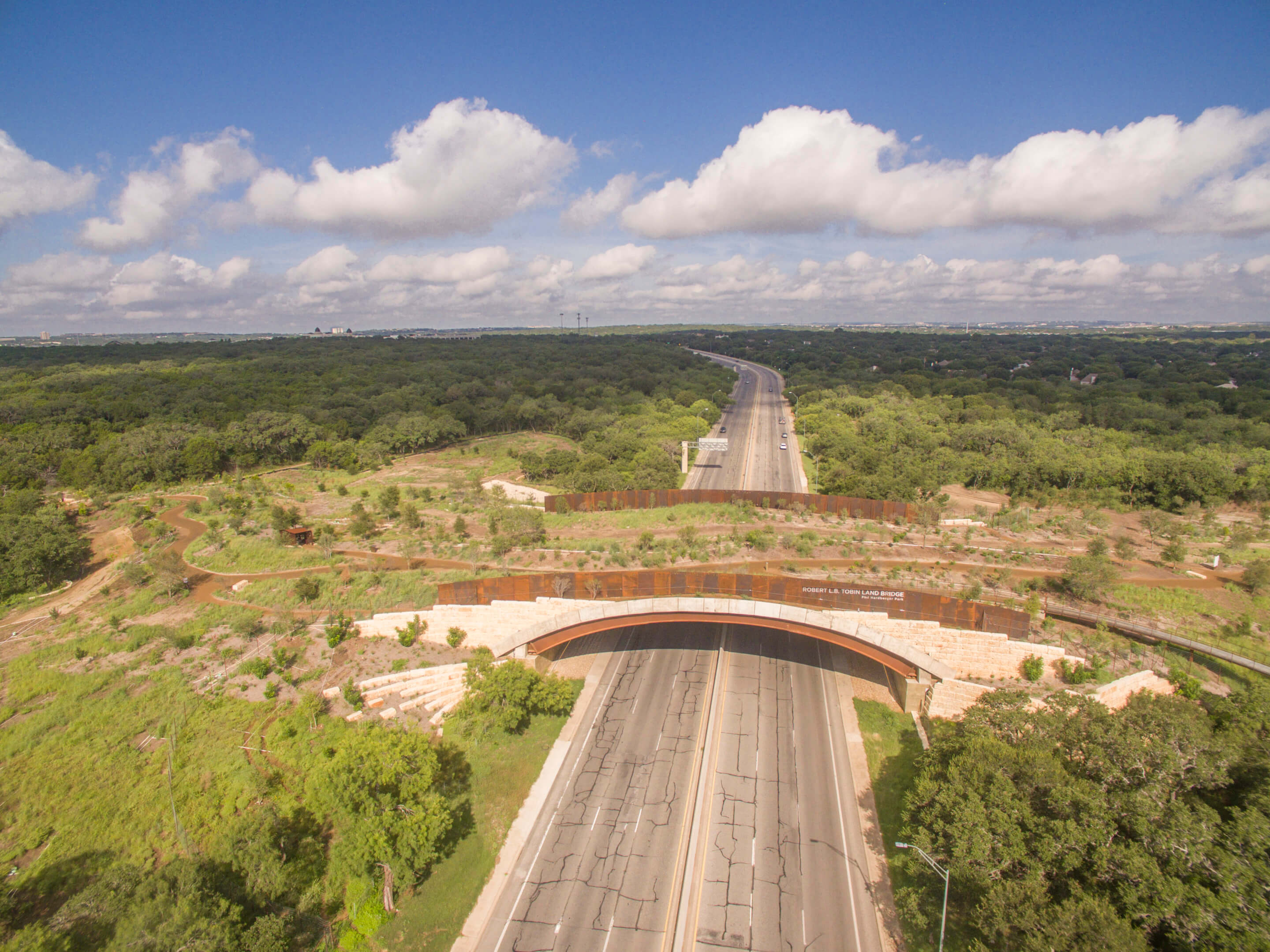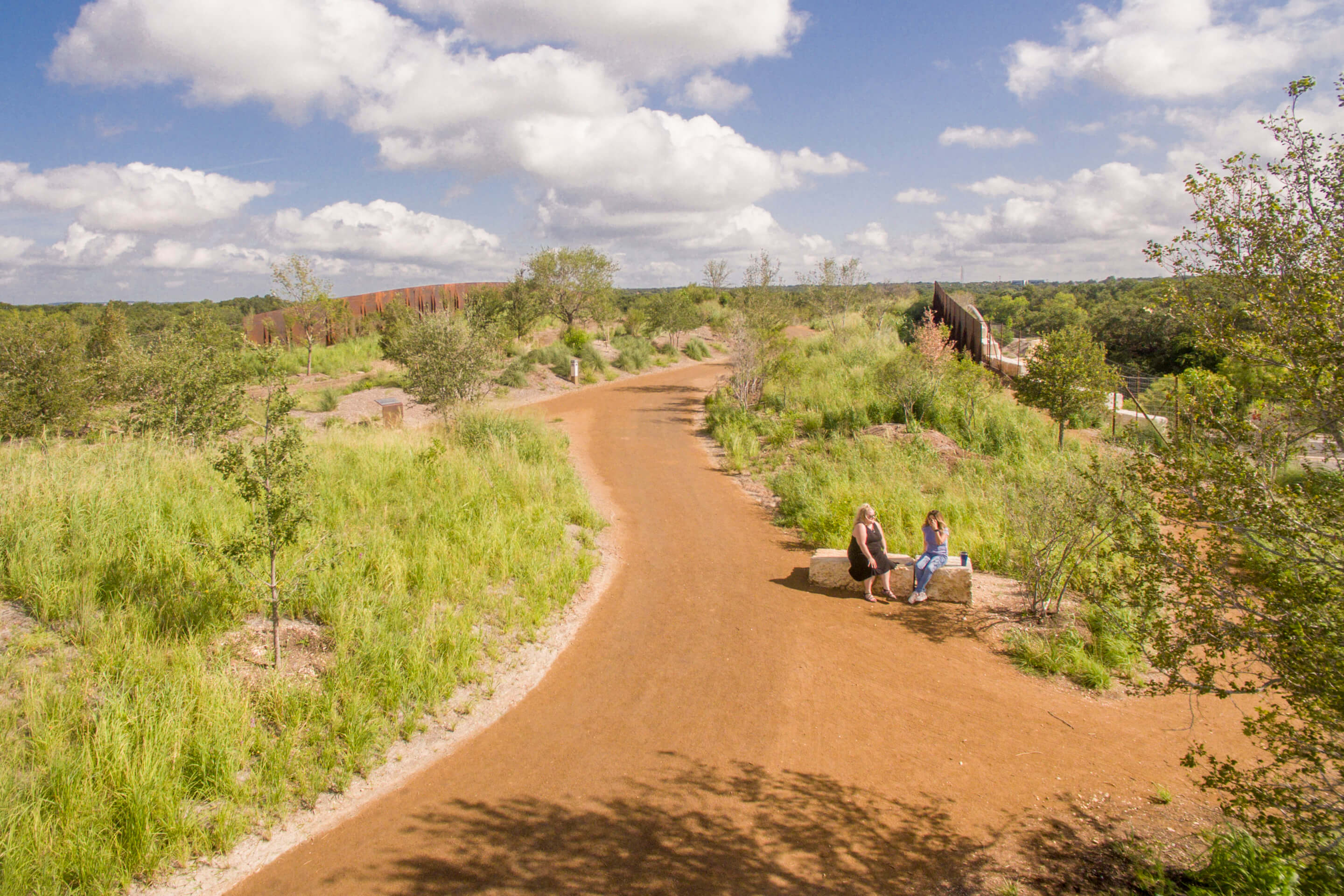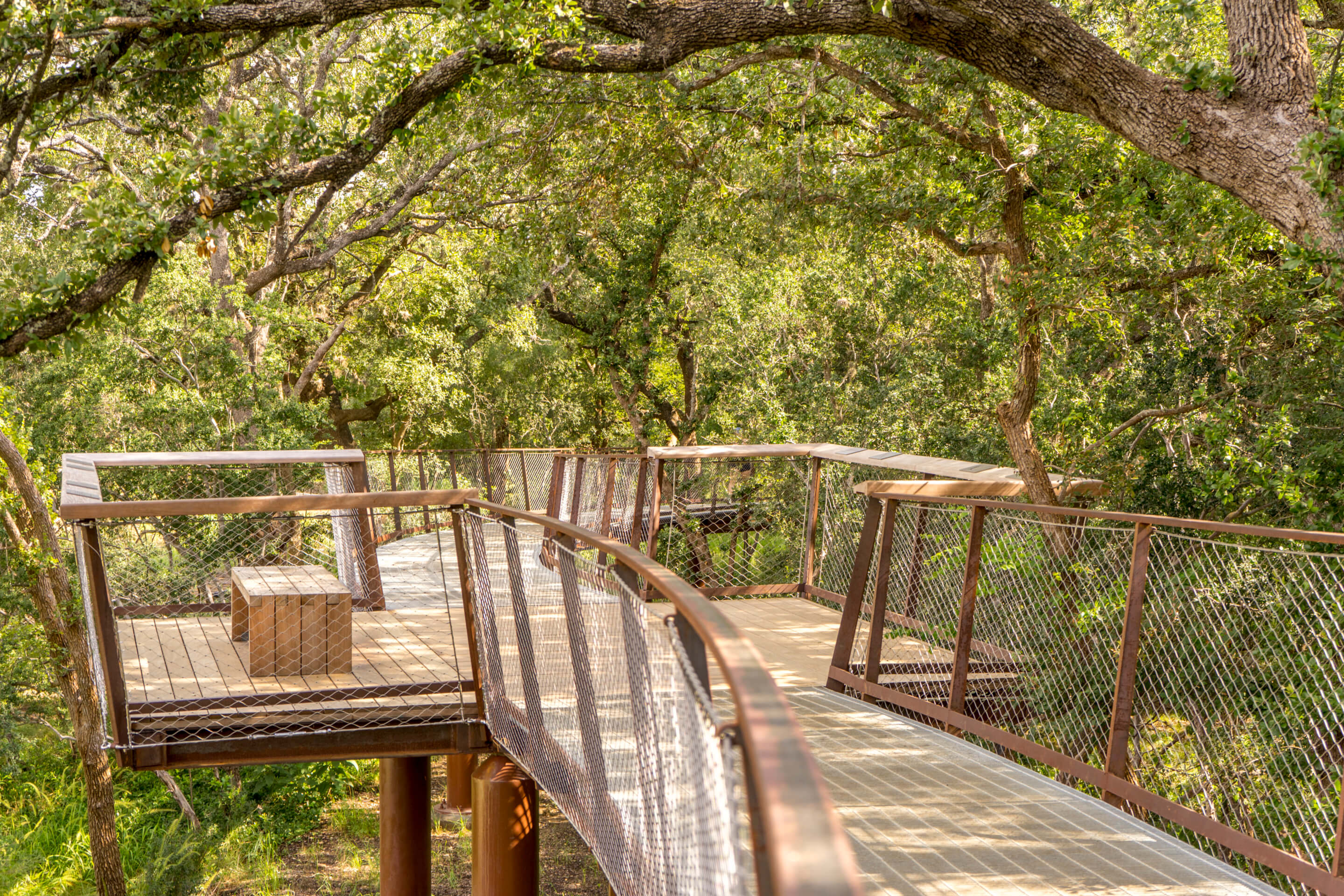Across North America, from major urban centers to remote national parks, wildlife crossings have gained considerable popularity in efforts to mitigate the deleterious environmental and economic effects of animal-related car collisions. But while most such bridges serve the singular purpose of funneling wildlife across dangerous highways and reducing roadkill, one project in San Antonio took things a step further.

The recently completed Robert L.B. Tobin Land Bridge connects portions of Phil Hardberger Park on either side of the Wurzbach Parkway, a major road that bisects the green space east-to-west. What sets the overpass apart is its accommodation of both human and non-human users. With native plantings and rusticated walls that obscure the road below, the bridge creates as seamless a transition from one side to the other as possible. Wide pathways allow pedestrians to walk across without traffic-related disturbances, but also provide ample space for opossums, deer, rabbits, armadillos, ring-tailed cats, and coyotes to safely traverse the roadway.

Developed by the Cambridge-based design collective STIMSON in collaboration with consultants from the San Antonio-based landscape architecture firm Rialto Studio, the land bridge features ADA-compliant sloping paths and an elevated skywalk that enables visitors to view the park from a higher vantage point. There are two wildlife viewing blinds with perforated screens designed by local artists Ashley Mireles and Cade Bradshaw, an amenity that provides users with ample shade and opportunities to see passing animals. The mountain laurels, cactuses, persimmons, and other plants on the bridge are irrigated by rainwater collected in a 250,000-gallon underground cistern.

The Robert L.B. Tobin Land Bridge is one of only two purpose-built, mixed-use wildlife crossings in the U.S., a distinction made possible by its location in an urban park with relatively heavy foot traffic. According to a study published by the U.S. Department of Transportation, such crossings are recommended only when conservationists do not consider the affected wildlife habitat to be critical. In state and national parks, wildlife crossings typically exclude human users and employ vast fencing systems to direct endangered species away from highways and towards the overpasses.

To ensure that both human and animal users feel comfortable on the Robert L.B. Tobin Land Bridge even when crossing simultaneously, STIMSON and Rialto Studio designed it to be almost as wide as it is long—150 feet across at its center. Early results seem to indicate that the land bridge is working well. Several mammals were documented using the bridge overnight this summer, suggesting that the crossing offers a welcome respite from the threats that accompany urban and suburban development.











